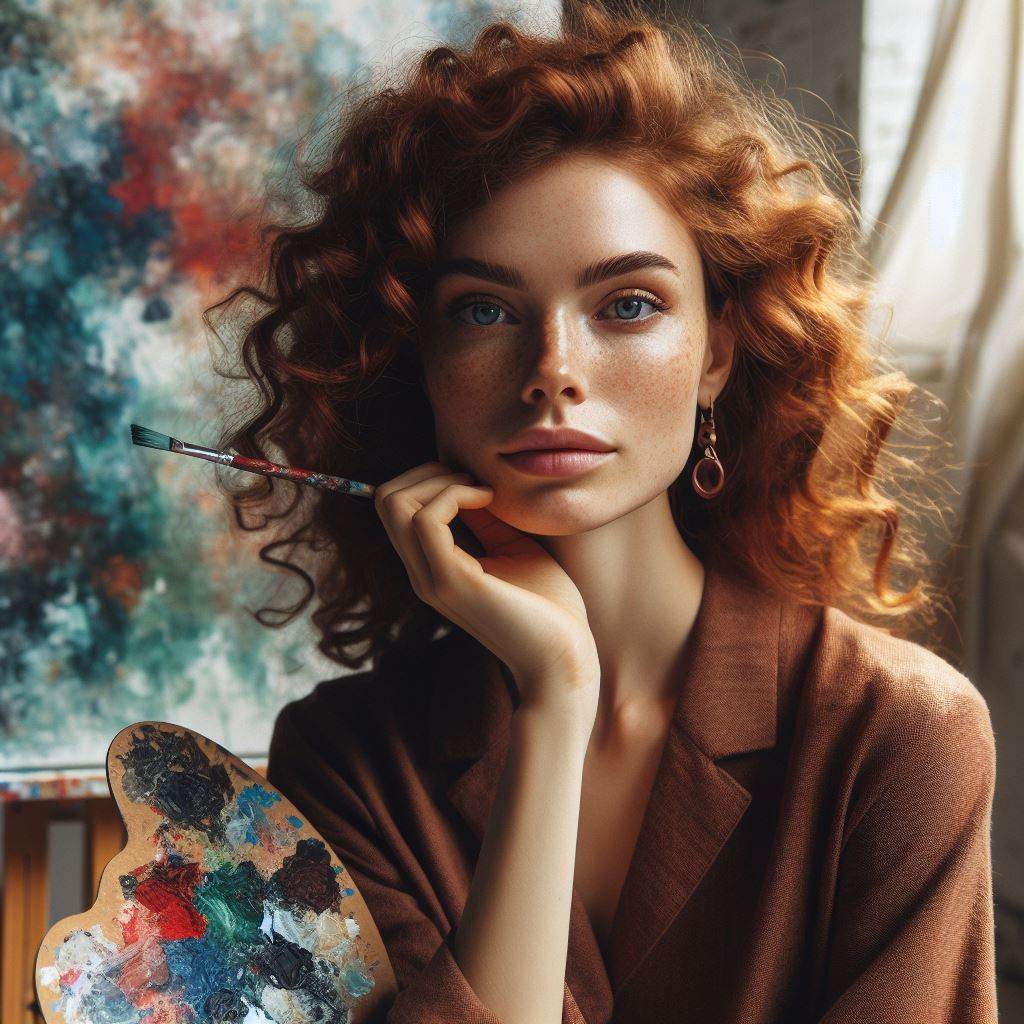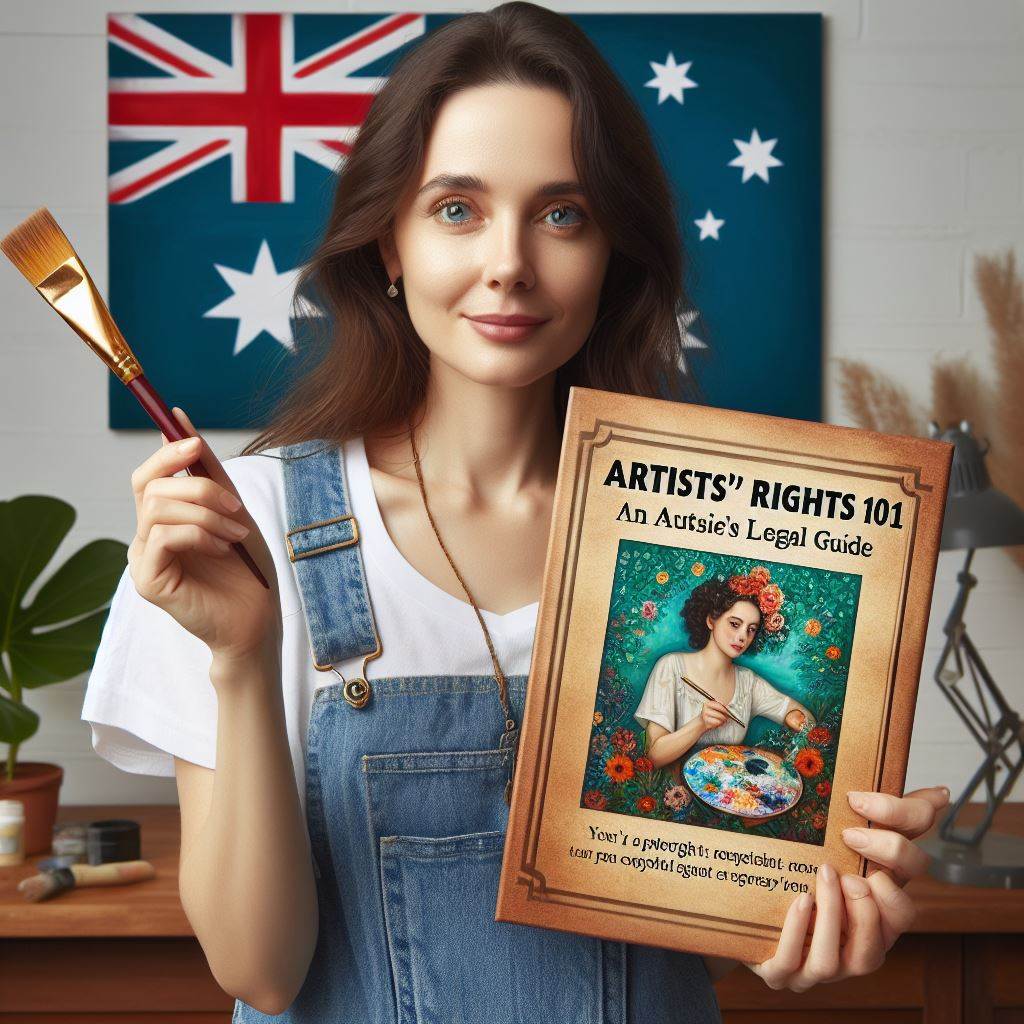Introduction
In today’s blog post, we will delve into the essential topic of legal tips for artists in Australia.
It is crucial for artists to understand the legal considerations that come with their craft.
By gaining knowledge in this area, artists can protect their rights, avoid potential legal issues, and thrive in their creative pursuits.
Throughout this post, we will cover various aspects related to legal tips for artists in Australia.
By examining the legal landscape, artists will gain insights into intellectual property rights, copyright laws, contracts, and other key legal considerations they should be aware of.
Understanding the legal considerations for artists is of utmost importance.
It allows artists to safeguard their work, maintain control over their creations, and avoid infringement of their artistic rights.
Moreover, legal knowledge empowers artists to make informed decisions when entering into agreements with galleries, agents, or clients.
In the upcoming sections, we will explore the significance of intellectual property rights for artists and provide guidance on copyright protection.
We will also discuss the importance of contracts and agreements in the art industry and offer insights on how to navigate legal disputes, if they arise.
In a nutshell, this blog post aims to equip artists in Australia with fundamental legal tips that can enrich their artistic journey.
By understanding and effectively navigating legal considerations, artists can protect their creations, establish fair collaborations, and thrive in the vibrant Australian art scene.
Understanding Copyright Laws in Australia
Copyright is a crucial aspect of protecting artistic creations in Australia. Artists need to have a comprehensive understanding of copyright laws to safeguard their work and prevent unauthorized use.
This blog section will explore the basics of copyright law in Australia, how copyright protection works for artists, and provide valuable tips for artists to protect their creative works.
Basics of Copyright Law in Australia
- Copyright is an automatic right: As soon as an artistic work is created, it is automatically protected by copyright in Australia. There is no need to register it.
- Duration of copyright: In Australia, copyright protection generally lasts for the life of the artist plus 70 years.
- Exclusive rights: Artists have exclusive rights to reproduce, publish, communicate, and commercially exploit their creative works.
- Originality requirement: Copyright protection applies to original works that possess a sufficient degree of skill, labor, and judgment.
How Copyright Protection Works for Artists
- Tangible form: Copyright protection applies to artistic works that are expressed in a tangible form such as paintings, sculptures, photographs, or digital art.
- Moral rights: Artists have moral rights that protect the integrity and reputation of their work. These rights include the right to be attributed as the creator and the right to prevent derogatory treatment.
- Copyright infringement: Artists have the right to take legal action against anyone who infringes upon their copyright. This includes unauthorized reproduction, distribution, or public display of their work.
Tips for Artists to Protect Their Creative Works
- Use copyright notices: Displaying the copyright symbol (©), the artist’s name, and the year of creation on their works can help deter potential infringers.
- Keep documented evidence: Artists should keep records that prove their ownership and the creation date of their work. This can include sketches, drafts, or correspondence related to the work.
- Register your work: Although registration is not required for copyright protection, it can provide additional evidence in case of legal disputes. Artists can register their works with the Copyright Office for a small fee.
- Licensing agreements: Artists can grant licenses to others for the use of their work while retaining their copyright. These agreements can outline the terms and conditions of use and help artists earn income from their creations.
- Monitor online platforms: Artists should regularly search online platforms and social media networks for unauthorized use of their work. Reporting copyright infringement to the platform can result in the removal of the infringing material.
- Seek legal advice: If an artist suspects copyright infringement or faces legal challenges, it is essential to consult with a copyright lawyer who specializes in intellectual property law.
Understanding copyright laws is essential for artists in Australia to protect their creative works.
By knowing the basics of copyright law, how copyright protection works, and following valuable tips, artists can preserve their rights and prevent unauthorized use.
Remember, copyright is automatic, but taking proactive steps can provide additional protection and ensure artists can benefit from their artistic endeavors.
Read: Ghostwriting in Australia: An Insider’s View
Navigating licensing and royalties
Navigating licensing and royalties can be a complex process for artists in Australia. Understanding the concept and different types of licenses available is crucial.
Here are some tips on how to negotiate licensing agreements and royalties effectively.
Concept of licensing and royalties for artists
Licensing refers to the permission granted by the copyright owner to another party to use their artistic work. It is a legal agreement that outlines the terms and conditions of use.
Royalties, on the other hand, are the payments made to the copyright owner for the use of their work.
Understanding the different types of licenses available
- Exclusive License: This type of license grants exclusive rights to one party, preventing others from using the artwork.
- Non-Exclusive License: In this case, multiple parties can license the artwork simultaneously.
- Sublicensing: A sublicensing agreement allows the licensee to grant licenses to third parties.
Tips on how to negotiate licensing agreements and royalties
- Research the market: Before entering into any agreement, artists should research the market to determine the value of their artwork and the industry standards for licensing fees and royalties.
- Clearly define the scope of use: Artists should clearly define how their artwork will be used, such as in print, online, or merchandise, to ensure that the license agreement reflects their intentions.
- Set fair compensation: Negotiating fair compensation is essential. Artists should consider factors such as exclusivity, duration of use, and potential profits generated from the licensed artwork.
- Seek legal advice: It is always advisable for artists to seek legal advice before entering into any licensing agreement. A lawyer specializing in intellectual property can help artists understand the terms and protect their rights.
Additional considerations for licensing and royalties
- Termination clause: Artists should include a termination clause in their licensing agreement to protect themselves in case of any breach or misuse of their artwork by the licensee.
- Clear payment terms: Ensure that the licensing agreement clearly defines the payment terms, including the frequency and method of royalty payments.
- Keep track of licenses and royalties: Artists should maintain proper documentation of all licensing agreements and keep track of royalties received to ensure accurate payment and prevent any potential disputes.
In fact, navigating licensing and royalties requires a thorough understanding of the concept and different types of licenses available.
Negotiating fair agreements and seeking legal advice is crucial for artists to protect their rights and receive fair compensation for the use of their artwork.
By following these tips, artists can successfully navigate the world of licensing and royalties in Australia.
Read: Australia’s Top Literary Magazines in 2024
Contracts and agreements for artists
Having written contracts and agreements is crucial for artists in Australia to protect their rights and ensure fair treatment.
These legal documents outline the terms and conditions of a working relationship, preventing disputes and misunderstandings.
Whether it is an agreement with a gallery, agent, or client, artists must be aware of key elements to include and follow some tips to make informed decisions.
Importance of having written contracts and agreements
Written contracts and agreements provide a sense of security and clarity for artists. They establish a legal framework that protects the artist’s work, intellectual property rights, and financial interests.
Without a written agreement, artists may face difficulties in enforcing their rights and getting paid for their work.
Additionally, contracts and agreements create transparency between the parties involved, ensuring that both the artist and the other party understand their respective obligations and responsibilities.
Clear communication is essential to avoid any misunderstandings or misinterpretations along the way.
Key elements to include in artist contracts
When creating an artist contract, there are several key elements that should be included to protect the artist’s interests:
- Scope of work: Clearly define the scope of the artist’s work, including the type of artwork, quantity, deadlines, and any specific requirements or limitations.
- Payment terms: Establish the agreed-upon compensation for the artist and specify when and how payment will be made. Include details on any additional expenses that the artist may incur and who will be responsible for those costs.
- Intellectual property rights: Clearly outline who retains ownership of the artwork and define the usage rights of the artwork by the other party. This includes reproduction rights, licensing, and any limitations on the use of the work.
- Termination clauses: Include provisions that define the conditions under which the contract can be terminated by either party. This ensures that both parties have a clear understanding of their rights and responsibilities in case the working relationship needs to be ended prematurely.
- Dispute resolution: Specify the process for resolving any potential disputes that may arise during the course of the agreement. This can include mediation, arbitration, or litigation, depending on the preferences of the parties involved.
Tips for artists when entering into agreements
Artists should keep the following tips in mind when entering into agreements with galleries, agents, or clients:
- Seek legal advice: It is advisable to consult with a lawyer who specializes in arts and entertainment law to ensure that the contract is fair and protects the artist’s interests.
- Negotiate terms: Do not hesitate to negotiate the terms of the agreement to ensure that it aligns with your needs and expectations as an artist. Remember, contracts are meant to be mutually beneficial.
- Read the fine print: Carefully review all the terms and conditions stated in the contract before signing. Pay attention to any clauses that may limit your rights or impose unfair obligations.
- Keep copies: Always keep copies of signed contracts and agreements for your records. These documents serve as evidence and can be vital in case of a dispute.
- Regularly evaluate agreements: As an artist’s career evolves, it is important to regularly review and update existing agreements to ensure they align with your current circumstances and goals.
By understanding the importance of written contracts and agreements, including key elements, and following these tips, artists in Australia can protect their rights and navigate the art industry with confidence.
Read: Investigative Reporting in Australia
Your Personalized Career Strategy
Unlock your potential with tailored career consulting. Get clear, actionable steps designed for your success. Start now!
Get Started
Tax Considerations for Artists
As an artist in Australia, it is crucial to be aware of the tax obligations and considerations that come with your profession.
Understanding deductible expenses and managing your taxes can help you stay compliant while maximizing your financial resources. Here’s an overview of tax considerations for artists:
Overview of Tax Obligations
Artists, like any other self-employed individuals, are required to report their income and pay taxes accordingly. It is essential to keep accurate records of all your earnings and expenses related to your artistic endeavors.
When it comes to income tax, artists must declare any income they receive from selling their artwork, commissions, grants, or any other sources. This includes both cash and non-cash payments, such as trading artwork for services.
As an artist, you are also eligible for certain deductions to reduce your taxable income. Keep track of expenses related to your artistic work, such as art supplies, studio rent, exhibition expenses, and professional development courses.
Understanding Deductible Expenses
Knowing what expenses you can deduct as an artist can significantly reduce your overall tax liability. Some common deductible expenses for artists include:
- Art supplies: You can claim the costs of materials you use in creating your artwork, such as paint, brushes, canvases, and sketchbooks.
- Studio expenses: If you rent a studio or workspace, the rental expenses can be deducted. This includes rent, utilities, and insurance costs.
- Exhibition and marketing: Costs associated with exhibiting your artwork, including framing, installation, gallery fees, and promotional materials, are tax-deductible.
- Professional development: Expenses for attending workshops, conferences, courses, or hiring a mentor to improve your artistic skills are deductible.
- Travel and accommodation: If you need to travel for artistic purposes, such as attending exhibitions or residencies, you can claim the expenses for transportation and accommodation.
Remember to keep detailed records and receipts for all your deductible expenses. This will help support your claims and ensure compliance with the Australian Taxation Office (ATO) requirements.
Tips for Managing Taxes as an Artist
Managing taxes can be overwhelming, but here are some tips to help you stay organized and compliant:
- Maintain accurate records: Keep track of all your income and expenditures throughout the year using a dedicated accounting system or software.
- Separate personal and business finances: Open a separate bank account for your artistic income and expenses to simplify record-keeping.
- Consider GST registration: If your business turnover exceeds the GST threshold (currently $75,000), you may need to register for the Goods and Services Tax (GST).
- Seek professional advice: Consulting with a tax professional who specializes in working with artists can provide invaluable guidance and help you navigate the complexities of tax law.
- Stay informed: Keep up-to-date with any changes in tax laws or regulations that may affect artists. The ATO website and other reliable sources can provide important information.
By understanding your tax obligations and taking advantage of available deductions, you can effectively manage your taxes as an artist in Australia.
Staying compliant with tax laws will not only help you avoid penalties but also provide a solid financial foundation for your artistic career.
Read: Theatre Writing in Australia: A Primer
Intellectual Property Considerations
Exploring the Importance of Protecting Intellectual Property
- Intellectual property is crucial for artists as it protects their creative works and ensures they benefit from their creations.
- Copyright law grants artists exclusive rights to control their work and prevent others from using it without permission.
- Protecting intellectual property allows artists to earn income from the sale or licensing of their creations.
- By safeguarding their intellectual property, artists can maintain their reputation and brand identity in the art market.
Trademarks and Branding for Artists
- Trademarks are valuable assets for artists as they identify and distinguish their goods or services in the market.
- Artists can create a unique brand identity by obtaining a registered trademark for their name, logo, or slogan.
- Trademarks not only provide legal protection but also enhance the marketability and value of an artist’s work.
- Registering a trademark in Australia gives artists exclusive rights to use and protect their brand, preventing others from infringing upon it.
Tips on How to Avoid Copyright Infringement and Protect Intellectual Property
- Always obtain permission or a license when using someone else’s copyrighted work in your own art.
- If unsure about copyright ownership, conduct thorough research or consult an intellectual property lawyer.
- Be cautious when using digital content, including images, music, or text, to avoid infringing upon others’ copyrights.
- Use watermarks or digital rights management tools to deter unauthorized use of your original artwork online.
- Include copyright notices on your art, website, or promotional materials to assert your ownership and rights.
- Consider registering your copyrights with the Australian Copyright Council to strengthen legal protection.
- Keep records of your creative process, including sketches, drafts, or concept notes, to defend against potential infringement claims.
- Monitor the market for unauthorized use of your intellectual property and take prompt legal action if necessary.
- Enter into well-drafted contracts when collaborating with others to clarify ownership rights and prevent future disputes.
- Stay informed about changes in intellectual property laws and consult legal professionals for guidance on protecting your rights.
In review, artists in Australia must prioritize protecting their intellectual property to secure their creative rights, income, and reputation.
Understanding the importance of trademarks, copyrights, and taking proactive measures to avoid infringement is crucial for artists to thrive in the art industry.
By following these tips, artists can navigate the legal landscape confidently and safeguard their valuable artistic creations.
Learn More: Scriptwriting for Aussie Films: A Study
Seeking legal advice
- Consulting with a lawyer specializing in arts and entertainment law has numerous benefits.
- Artists should seek legal advice when facing legal issues or entering into contracts.
- Finding the right legal professional is crucial for artists in Australia.
Consulting with a lawyer who specializes in arts and entertainment law offers several advantages for artists in Australia.
These professionals have extensive knowledge and experience in dealing with legal matters specific to the art industry, including copyright issues, licensing, contracts, and intellectual property rights.
Their expertise can help artists navigate complex legal landscapes and protect their rights.
Artists should seek legal advice whenever they are facing legal issues or entering into contracts.
Legal guidance can be invaluable in situations such as negotiating licensing agreements, drafting contracts, resolving copyright disputes, or dealing with gallery representations.
A lawyer specializing in arts and entertainment law can provide advice tailored to the particular needs and challenges of artists, ensuring their rights are protected and their interests are represented.
However, finding the right legal professional for artists in Australia requires careful consideration. Here are some tips to help artists in their search:
Stand Out with a Resume That Gets Results
Your career is worth more than a generic template. Let us craft a resume and cover letter that showcase your unique strengths and help you secure that dream job.
Get HiredSpecialization and experience
Look for a lawyer who specializes in arts and entertainment law and has relevant experience working with artists. This expertise ensures they are well-versed in the legal issues artists commonly face.
Reputation and referrals
Seek recommendations from fellow artists, industry professionals, or arts organizations. Research the lawyer’s reputation and track record to ensure they are trustworthy and reliable.
Understanding and communication
Choose a lawyer who understands the unique challenges artists face and can communicate legal concepts in a clear and accessible manner. Effective communication is essential for a successful lawyer-client relationship.
Affordability
Consider the lawyer’s fees and ensure they align with your budget. Discuss the fee structure and any additional costs during the initial consultation to avoid surprises later on.
Compatibility and trust
Meet with potential lawyers to assess their compatibility with your working style and personal values. Trust and good rapport are essential for a productive lawyer-client relationship.
In essence, consulting with a lawyer specializing in arts and entertainment law can provide invaluable legal advice and support for artists in Australia.
By seeking legal guidance, artists can ensure their rights are protected, contracts are negotiated effectively, and potential disputes are resolved efficiently.
When searching for the right legal professional, artists should consider specialization, experience, reputation, understanding, affordability, and compatibility.
By finding the right lawyer, artists can navigate the legal complexities of the art industry and focus on their creative pursuits.
Discover More: Aussie Actors’ Health: Balancing Act & Life
Conclusion
This blog post has highlighted important legal tips for artists in Australia.
We have emphasized the need for artists to prioritize understanding these legal tips to protect their rights.
By having a clear understanding of copyright laws, contracts, and royalties, artists can thrive and navigate the legal framework in Australia.
It is crucial for artists to educate themselves about their legal rights and seek professional advice when needed.
By doing so, artists can safeguard their work, resolve legal disputes, and cultivate a thriving creative career.
Remember, legal knowledge and awareness are essential for artists to flourish and make informed decisions.
Take the necessary steps to protect your creative endeavors, and embrace the legal framework as a means of empowerment.
Transform Your LinkedIn for Maximum Impact
Elevate your professional brand with a LinkedIn profile that attracts recruiters, showcases your expertise, and maximizes opportunities. Stand out in your industry with a profile built for success.
Boost ProfileArtists possess valuable talents and deserve to thrive within a legal system that values and protects their rights.
So, keep creating, keep learning, and keep striving to protect your rights as an artist in Australia!




